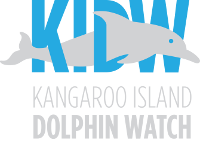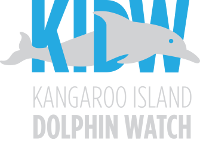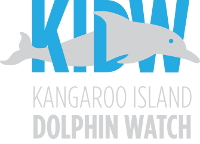KI Dolphin Watch Coordinator Tony Bartram put to sea recently with students from Think Global School who were visiting Kangaroo Island under the auspices of Exceptional KI. The students visited the North Cape sight in two groups and the first group was treated to a wonderful display by the pod in quite trying conditions. Even though conditions worsened, the second group had an even more outstanding experience as the Dashwood Bay pod from further up the coast came visiting, resulting in a close encounter with 50+ local dolphins including some playful juveniles. The students assisted in Dolphin Watch’s data collection efforts with excellent results and declared afterwards “doing Science this way is better than going to an amusement park!” A highlight for all was skipper Andrew Neighbour’s skilful manouvering of “Island Explorer” in the less than perfect conditions.
Flinders University Scientists on the Water
Late in 2010 scientists from the Mitchell / Seuront Laboratories at Flinders University in Adelaide joined volunteers on a field survey to a number of monitoring sites on Kangaroo Island’s North Coast. Professor Laurent Seuront, PhD candidates Nardi Cribb and Coraline Chapperon performed water column tests to underpin Nardi’s habitat research which will incorporate data from Kangaroo Island Dolphin Watch. Discussions regarding substrate types have resulted in current extensive modifications and reformatting of Dolphin Watch data to facilitate this usage. Professor Seuront expressed great interest in the enormous research potential offered by Kangaroo Island’s wild dolphin populations. The benefits of such collaborative effort are many and assist in our efforts towards protection and conservation.
Natural Resource Management Board Award for Kangaroo Island Dolphin Watch
The efforts of students, community volunteers and scientists involved in Kangaroo Island Dolphin Watch’s dolphin monitoring and conservation programme in partnership with The Whale and Dolphin Conservation Society of Australasia, received local acknowledgement recently when they won the 2010 Local Achievers Natural Resource Management Community Project Award. The presentation was made by Professor Chris Daniels; Professor of Urban Ecology, School of Natural and Built Environments – University of  South Australia, environmentalist and media personality, at the culminating event of the two day “Brush With Biodiversity†NRM Conference on Kangaroo Island. In her speech at the presentation ceremony, KI Natural Resources Management Board presiding member Jackie Kelly paid tribute to KI Dolphin Watch’s outstanding efforts and resultant impact at local, national and international level.
Kangaroo Island Dolphin Watch at the International Pacific Marine Educators Network Conference
The Kangaroo Island Dolphin Watch programme was presented to the recent International Pacific Marine Educators Network Conference in July as a model of building sustainable coastal communities through cooperative effort. It was highly acclaimed and generated extraordinary interest from representatives of the Pacific nations present. Case studies from the local programme on Kangaroo Island, Whyalla and Port Pirie, where it has been successfully established, and including examples from Kenya and the Pacific, demonstrated clearly the ready adaptability and ease of application of the Dolphin Watch model, making it very appealing to all parties, particularly those facing economic challenges and hardships.




